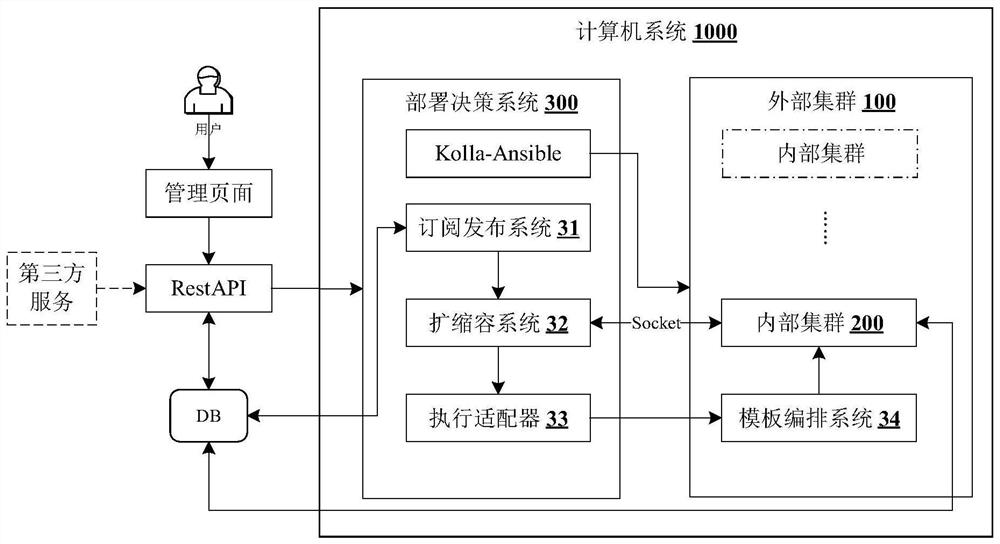OpenStack cluster nesting deployment method and system
A technology for deploying systems and clusters, applied in the field of cloud computing, can solve the problems of cumbersome deployment, poor Ceilometer response performance, and high technical threshold requirements for operation and maintenance personnel, so as to improve deployment efficiency and achieve fine-grained operations.
- Summary
- Abstract
- Description
- Claims
- Application Information
AI Technical Summary
Problems solved by technology
Method used
Image
Examples
Embodiment Construction
[0041] The present invention will be described in detail below with reference to the various embodiments shown in the accompanying drawings, but it should be noted that these embodiments do not limit the present invention. Equivalent transformations or substitutions all fall within the protection scope of the present invention.
[0042] A cluster is a group of computers that, as a whole, provide a set of network resources to users. These individual computer systems are the nodes of the cluster. In an ideal cluster, users will not be aware of the underlying nodes of the cluster system. From the user's point of view, the cluster is a system, not multiple computer systems, and the administrator of the cluster system can add or delete the nodes of the cluster system at will.
[0043] An OpenStack cluster refers to the deployment of service components required for OpenStack to run on multiple physical servers or multiple virtual machines. Nested OpenStack cluster deployment refer...
PUM
 Login to View More
Login to View More Abstract
Description
Claims
Application Information
 Login to View More
Login to View More - R&D
- Intellectual Property
- Life Sciences
- Materials
- Tech Scout
- Unparalleled Data Quality
- Higher Quality Content
- 60% Fewer Hallucinations
Browse by: Latest US Patents, China's latest patents, Technical Efficacy Thesaurus, Application Domain, Technology Topic, Popular Technical Reports.
© 2025 PatSnap. All rights reserved.Legal|Privacy policy|Modern Slavery Act Transparency Statement|Sitemap|About US| Contact US: help@patsnap.com



